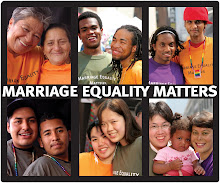Levine's basic point is that the rhetoric about the Stupak amendment exaggerates its potential impact on abortion restriction and misses the benefits that increased access to health care would bring for many women. He slings around a lot of statistics, like:
The Stupak amendment’s effect on any individual woman’s insurance coverage for abortion depends on what kind of insurance she has now. About 12 percent of the 62 million American women of childbearing age — ages 15 to 44 — are now covered by public insurance plans like Medicaid. For them there will be no change because current law already prohibits the use of federal funds to cover abortion costs.So the fact that 32% of American women currently have no access to a legal medical procedure means that we shouldn't protest the fact that this situation won't change in the future?
Likewise, the amendment would change nothing for women who now have no insurance — about 20 percent of women of childbearing age.
Levine continues:
The women whose abortion coverage would be at risk are those who are covered by private insurance — some 42 million women aged 15 to 44.Note that here he switches from discussing the percentage of women on Medicaid or uninsured to the number of women with private health insurance. 42 million women with private insurance are 68 percent of the women of childbearing age in the United States. Are we to believe that since the Stupak amendment might only affect 2/3 of the women of childbearing age, it's really not as big of a problem as some critics have suggested?
Well, that's not exactly what Levine is saying, for he goes on to note that those 42 million women are more likely to be older, to have higher family incomes, and to be less likely to have abortions than uninsured women or women on Medicaid. (He doesn't cite the sources for his figures about income and abortion, and I've not tried to verify them myself; for my argument here, I'm assuming those figures are accurate, but he's sloppy enough with the data he presents that I'm skeptical.) So because of the higher family income, Levine asserts that the Stupak amendment won't pose a big problem:
Even if women with private health insurance find themselves seeking an abortion, the out-of-pocket cost for the vast majority of them is not that high relative to their income. In general, 89 percent of abortions are performed in the first trimester; these non-hospital procedures cost an average of around $400.$400 can still be a lot of money.
Levine also says:
The small group of women who decide to abort after their first trimester — perhaps for reasons of fetal health — could potentially be affected more seriously, as these abortions are considerably more expensive. Yet the women who undergo second-trimester abortions are unlikely to be covered by private insurance now; nearly two-thirds of them have family incomes below 200 percent of the poverty level.Again he backs into the "these women are currently in a bad position so there's no need to complain that this won't address it" argument, with the "perhaps" suggesting that women seeking later-term abortions are perhaps doing it for "real" reasons, but perhaps not. Late term abortions aren't sought lightly, and it's maddening to read commentary that suggests they are.
Levine does make a good point: that even with the Stupak Amendment in place, health care reform would bring better access to health care to millions of women, and thus provide better access to contraception. This would be good, to get contraception to women who want it. But look at the way Levine plays out this point to slam the decisions of poor women to have children at all:
[His prior research on the effects of expanded Medicaid coverage and contraception and a reduction in unintended pregnancies] suggests that health care reform could lead to a substantial reduction in unintended fertility. Consider that there are 12.4 million uninsured women of childbearing age. Suppose that health care reform ended up providing health insurance for 10 million of them. Each year, roughly 7 percent of all women this age give birth, amounting to about 700,000 births to this group of women. If their rate of fertility were cut by 9 percent, then 63,000 unintended births could be avoided if health care reform is enacted.He has labeled every.single.one. of the births to uninsured women as "unintended," equating a reduction in births with a reduction in unintended pregnancies.
Politica's students are often surprised by the history of eugenics in the United States. The word may not be so common these days, but the prejudice against poor women having children is alive and well.
So that's what we're talking about after breakfast around here today.




1 comment:
I hate to think what the bill would have been for the treatment I received in 1992 if my then-husband hadn't had GREAT insurance through the state. I don't think we even saw a bill. We were heartsick about having a baby with a genetic abnormality and about terminating the pregnancy. We were young and living on one income while paying off student loans and if the funeral home hadn't given us a compassionate discount, I'm not sure how we would have taken care of the baby's remains. I guess I would have asked my parents to help, but at the time, that seemed impossible.
Maybe I ought to be blogging about this myself.
Post a Comment